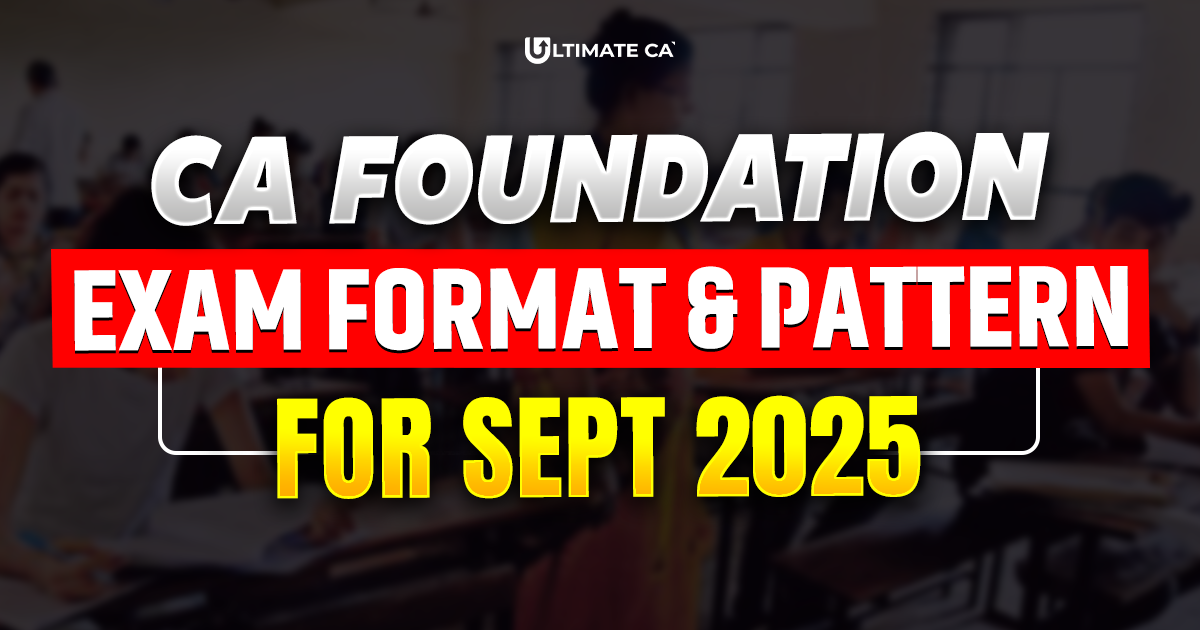The CA Foundation exam is the first official gateway for students pursuing Chartered Accountancy in India. It is administered by the ICAI (Institute of Chartered Accountants of India) and tests the candidate’s grasp over accounting, law, statistics, and economics.
With evolving trends in business and education, the 2025 pattern brings more structure, clarity, and analytical evaluation.
Let’s break down the exam in detail to help students understand every key aspect and strategize their preparation accordingly.
General Overview of the CA Foundation Examination
The CA Foundation exam is organized three times annually, offering candidates ample opportunities to appear based on their readiness. These cycles fall in January, May/June, and September.
Key Details:
- Mode of Exam: Offline (pen and paper-based)
- Number of Papers: 4
- Total Marks: 400 (100 per subject)
- Language Medium: English or Hindi (except for one section)
It is the foundational stage before progressing to the Intermediate and Final levels of CA.
Breakdown of Paper-Wise Structure
The CA Foundation comprises four distinct papers, each assessing a different skill set.
Paper 1: Accounting
- Format: Subjective (descriptive questions)
- Time Allotted: 3 hours
- Objective: Tests understanding of basic accounting principles and practical application.
Core Areas:
- Accounting principles and accounting standards
- Capital and revenue expenditures
- Final accounts for sole proprietors and partnerships
- Bills of exchange, consignment, joint ventures
- Non-profit organization accounting
The aim is to test not just rote learning but the analytical application of accounting concepts.
Paper 2: Business Laws
- Format: Subjective
- Time Allotted: 3 hours
- Note: Business Correspondence (Part B) must be answered only in English.
Paper Division:
- Part A: Business Laws (60 marks)
- Part B: Business Correspondence (40 marks)
Key Concepts:
- Indian Contract Act, 1872
- Sale of Goods Act, 1930
- Limited Liability Partnership Act
- Partnership law
This paper equips students with legal understanding and formal communication skills relevant to business scenarios.
Paper 3: Quantitative Aptitude
- Format: Objective (Multiple Choice Questions)
- Duration: 2 hours
- Negative Marking: Yes (–0.25 marks per wrong answer)
Sections:
- Mathematics: Time value of money, annuities, equations, ratios
- Logical Reasoning: Number series, statement-assumption, direction tests
- Statistics: Mean, median, mode, probability, correlation
Students must build speed and accuracy as the penalty for guessing incorrectly can affect scores significantly.
Paper 4: Business Economics
- Format: Objective (MCQs)
- Duration: 2 hours
- Negative Marking: Applicable
Major Topics:
- Microeconomics: Consumer demand, elasticity, revenue analysis
- Macroeconomics: National income, inflation, monetary/fiscal policies
- Basic business and commercial knowledge
This paper evaluates a student’s understanding of economic theory and how it is applied in business environments.
Language Options and Marking Criteria
Marking System:
- Papers 1 & 2: No deduction for incorrect answers
- Papers 3 & 4: 0.25 marks deducted for every wrong MCQ
Language of Attempt:
- Students may choose English or Hindi as their exam medium (excluding Section B of Paper 2 which is English-only).
This allows a wider range of students across different regions to participate confidently.
Qualifying Criteria
To pass the CA Foundation exam, a candidate must:
- Score at least 40% in each of the four papers
- Secure a minimum of 50% overall aggregate, i.e., 200 out of 400 marks
Failing either the subject-wise minimum or overall aggregate will require a student to reappear for all four papers, even if one paper is the only one below the cut-off.
Updated 2025 Syllabus – What’s New?
The 2025 exam pattern reflects a stronger focus on core competencies, with syllabus updates that bring relevance to modern business and finance.
- Accounting: Expanded coverage of partnership and company accounts
- Business Law: Focus on updated legal compliance frameworks
- Statistics & Math: Inclusion of practical tools like data analysis, compound interest
- Economics: More emphasis on Indian economic systems, public finance
These changes are aligned with the growing complexity of business transactions and analytics in today’s financial world.
Notable Changes in 2025
- Syllabus modernization to meet industry standards
- Greater use of MCQs to test real-time problem-solving
- Structured law and communication papers for holistic evaluation
- Three exam sessions annually to improve flexibility for aspirants
Next Exam Attempt – September 2025
- Expected Start Date: Around September 3, 2025
- Preparation Resources: Revision Test Papers (RTPs), Mock Tests (MTPs), ICAI sample papers
Candidates are advised to begin preparation at least 3–4 months in advance.
Eligibility and Registration Validity
- Must have completed Class 12
- Provisional enrollment possible post-Class 10
- Must allow a 4-month preparation window before the exam date
- Registration is valid for 3 years, renewable once for an additional 3 years
Preparation Strategy
Subjective Papers:
- Practice detailed answer writing
- Study with ICAI modules and past-year papers
Objective Papers:
- Use MCQ books and mock tests
- Focus on accuracy to reduce negative marking risks
General Tips:
- Stick to ICAI’s syllabus
- Follow a fixed revision schedule
- Use official RTPs and suggested answers for self-assessment
Enroll for CA Foundation Batches at Ultimate CA Classes
Ultimate CA Classes is known for its dedicated focus on building a strong academic foundation for Chartered Accountancy students. Their CA Foundation batches are carefully designed to cover the latest ICAI syllabus with clarity, depth, and real-world relevance.
The institute provides comprehensive study materials, regular mock tests, and personalized doubt-solving sessions, ensuring students are always exam-ready.
Whether you’re starting your preparation or revising for your next attempt, Ultimate CA Classes offers the structure and support you need to succeed.



